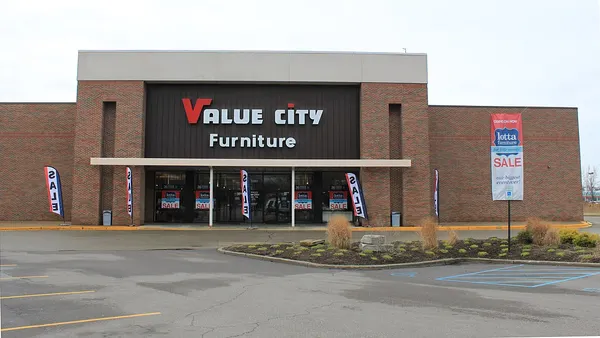Dive Brief:
- Amazon appears to be nearing completion of its first drive-thru grocery pickup locations in hometown Seattle, according to permit documents and signage viewed by GeekWire.
- Seattle municipal offices have granted permits to signs that read "AmazonFresh Pickup" for stores in the city's Ballard and SoDo neighborhoods. Windows will have signs that say "Hello, Ballard" and "Hello, SoDo" while exterior signs will read "Shop online. Pick up here" and "Relax while we load your groceries."
- Amazon reportedly has plans to open 20 grocery stores in major U.S. cities over the next couple of years.A request for comment to Amazon from Retail Dive was not immediately returned.
Dive Insight:
With Amazon’s grocery ambitions tightly held under wraps, evidence of its progress has mostly come in dribs and drabs in the media. That changed somewhat late last year with the official announcement of Amazon Go, a Seattle grocery store with no checkout process, much less checkout lines.
Amazon Go requires customers to launch a QR-code based app, which they scan upon walking into the site. The retailer’s “Just Walk Out” technology detects when products are removed from or returned to shelves, keeps track of them in a virtual cart, and totals the cost when customers depart the store. The app eventually automatically charges the card saved in the associated Amazon account and provides a digital receipt. The system leverages technologies used in self-driving cars, including computer vision, sensor fusion and deep learning, according to Amazon's website.
AmazonFresh Pickup introduces other technological innovations. Produce, milk, meats and other perishable items would be available for immediate choosing, while items like peanut butter, cereal and other merchandise with longer shelf lives could be picked out by robots working on a second floor; customers would choose those, using either their own mobile devices or possibly in-store touchscreens. Groceries could be delivered, or customers could opt to pick up purchases from designated drive-thru areas.
One potential inspiration behind Amazon’s ambitions: “A Beautiful Way to Save Woolworths,” a 2013 treatise by supply chain expert (and now Amazon staffer) Brittain Ladd posted on his LinkedIn page. The article, written before Ladd joined Amazon, describes a slew of options for grocery stores in Australia and the U.S., envisioning layers of retail-customer interaction that leverage the best of brick-and-mortar (see, touch, smell) for items customers usually want to choose themselves, combined with the best of e-commerce (commoditized items like laundry detergent chosen by brand or price that can be chosen off the shelf by robots) and an endless aisle (accessed via touchscreen and/or phones) that promises pickup or at least fast delivery of any item Amazon has on offer for its Amazon Fresh customers.
“Amazon can leverage stores for drive thru grocery pick-up where possible, and even leverage the stores for Amazon Locker locations,” Ladd wrote. “In essence, AmazonFresh becomes an ecosystem of channels centered on food and groceries capable of meeting the needs of all customers through all available channels. All grocery retailers must think in terms of creating an ecosystem for their customers. All grocery retailers must plan in terms of decades and not quarters, or most assuredly they will be left behind.”
Wal-Mart Stores Inc. also seems to have cottoned on to the idea of introducing the endless aisle via touchscreen. Wal-Mart CFO Brett Briggs, who announced the test at the Raymond James Investor Conference last week, said the touchscreen is more responsive and intuitive than most: "Some of these touchscreens, I really haven't liked in the past. I think they're a little clunky. (But) this one is really good.”














